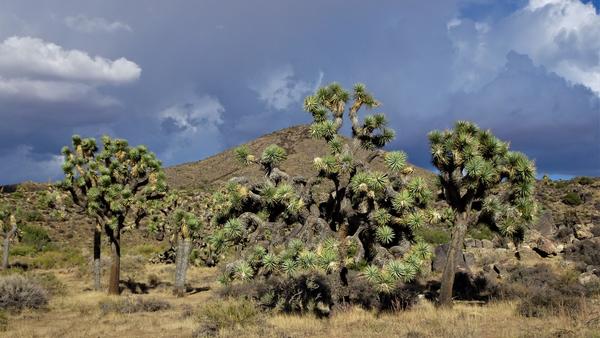Keystone Species
“Many of the medicines we use today, to fight everything from AIDS to cancer, originate as a toxin in an amphibian’s skin. When we lose these animals, we lose resources. We lose keystone species in the environments where they live” — Jeff Corwin
Although meant to be a compelling statement, I’m not sure that Jeff Corwin’s use of the term keystone species is correct. Using “keystone” as an adjective to describe something gives that thing heightened importance beyond the “thing” alone. In construction, a keystone by itself starts as simply a stone, but when placed at the top of an archway it becomes the one piece that holds the archway in place, giving it far more importance than an isolated stone.
Naturalists and ecologist have borrowed this term to describe species that, by their presence, enable far more species to exist within a given habitat. The first reference to a keystone species came from tidepool research conducted by Robert Paine and his students. What they observed was that some tidepools had far more species than others, ranging from just one species to perhaps a dozen or more. Their question was why? What they found was the single species tidepools were always comprised of a clam-like creature called a mussel. In those single species tidepools the mussels occurred in the thousands. However, in other tidepools where many species occurred, there was one common denominator – starfish. Along with the starfish there were sea anemones, chitons, barnacles, hermit crabs, abalone, many other sea creatures, and mussels. Each tidepool might have a different assortment of species, but when there were more than just mussels, starfish were always present. It turns out that for a starfish, mussels are number one on their menu for breakfast, lunch, and dinner. The starfish’s voracious appetite keeps the mussels from occupying every space in the tidepool, and those vacated spaces provide habitats for all the other tidepool species to then thrive. Starfish are the “keystone species” that enable tidepools to be filled with other species.
Kevin Crooks and Michael Soulé studied the composition fragmented patches of a once wide-spread plant community, coastal sage (dominated by short-statured sages, sagebrush, and other often aromatic shrub species), in San Diego at the southwestern corner of California. This plant community was once the dominant cover for vast stretches of the coastal plain and foothills over what is now Santa Barbara to San Diego. That landscape is now the home of many millions of humans; the only remaining coastal sage habitats are often steep sided canyons where homes cannot be safely built. This sage community once provided habitat for dozens of birds, mammals, and reptile species.
Kevin and Michael wanted to know whether those remaining fragments of coastal sage still supported this rich biodiversity. Like Robert Paine’s tidepools, it turned out some of these habitat fragmented habitats still were species-rich, but many were not. The common denominator for those still high in biodiversity was the presence of top predators, coyotes and mountain lions. When these predators were present so were the dozens of birds, mammals, and reptile species. But when the top predators were absent the habitat fragments were silent. It turned out that the absence of coyotes and lions was related to the size of the fragment and whether it was connected to other habitats. Small, isolated habitats lacked the top predators, and with their absence populations of medium-sized “meso-predators,” such as raccoons, skunks, opossums, and weasels (and feral house cats) exploded. Theses meso-predators effectively wiped-out nesting birds, pocket mice and kangaroo rats, and horned lizards (and others). When present, coyotes and mountain lions kept the meso-predator populations in check, and the nesting bird, native rodent, and reptile populations sustained themselves in healthy numbers; for this habitat, like the tidepools, the top predators are the keystone species.
While they are always important, the designation of “keystone species” is not limited to apex predators. In the Mojave Desert, Joshua trees are considered keystone species. Cactus wrens, ash-throated flycatchers, ladder-backed woodpeckers, screech owls, night lizards, night snakes, spiny lizards, and a multitude of insects are, if not dependent on, they are far more abundant when Joshua trees are present. The ladder-backed woodpeckers are perhaps another keystone species since the nest holes they create in the Joshua trees, once they abandon them, become habitat for the screech owls, flycatchers, and spiny lizards. Throughout the North American Deserts, burrowing animals (tortoises, ground squirrels, and kangaroo rats), are also keystone species as their burrows can be occupied (in some cases co-occupied) by lizards, snakes and burrowing owls, and these burrows can be critically important as thermal refugia. In extreme hot and cold conditions, having access to these thermal refugia can be essential for the survival of species who otherwise cannot excavate their own burrows. Keystone status can also be bestowed upon diminutive species such as pollenating insects and harvester ants. Harvester ant are essential food for horned lizards (throughout the lizards’ active season) and for fringe-toed lizards during the summer and fall months when succulent flowers and leaves, and pollenating insects are scarce or absent. Harvester ants also move seeds and can change the character of springtime annual plant blooming based on the seeds the ants consumed or did not consume the previous year. For those reasons harvester ant are also keystone species, because if for some reason the harvester ants were absent, there would be a cascade of consequences impoverishing desert biodiversity.
Keystone species have become important focus for conservation efforts. While the complex habitat needs and relationships of the multitude of species occupying a landscape may never be fully known, ensuring that keystone species are accommodated within a conservation strategy gives more assurance that the species richness of that region will remain intact.
Nullius in verba
Go outside, tip your hat to a chuckwalla (and a cactus), think like a mountain, and be safe.
